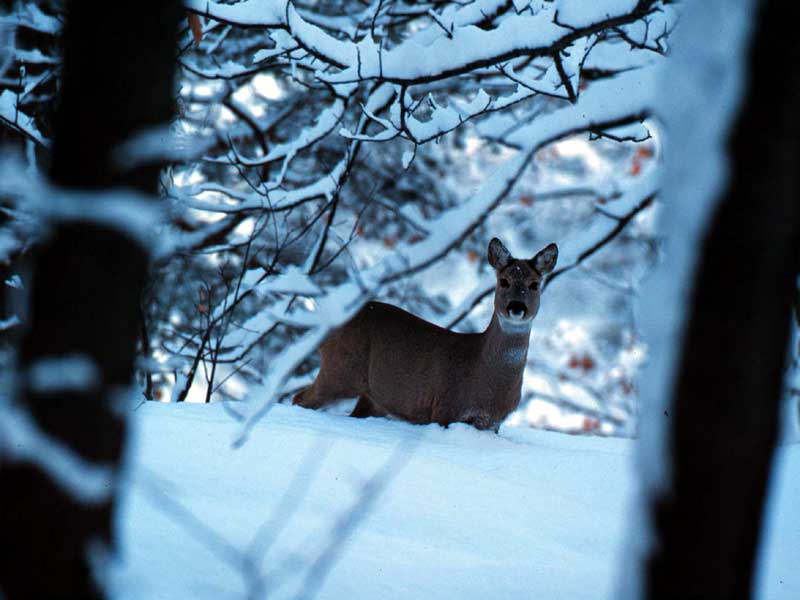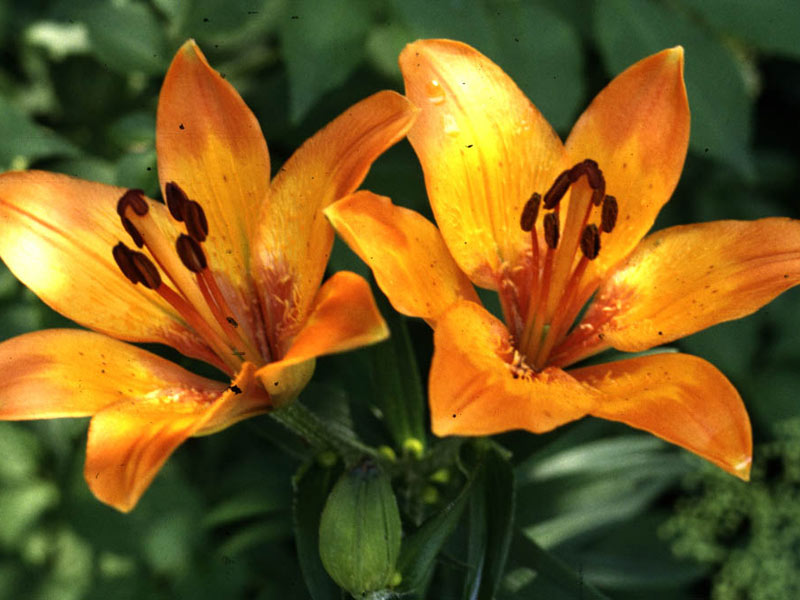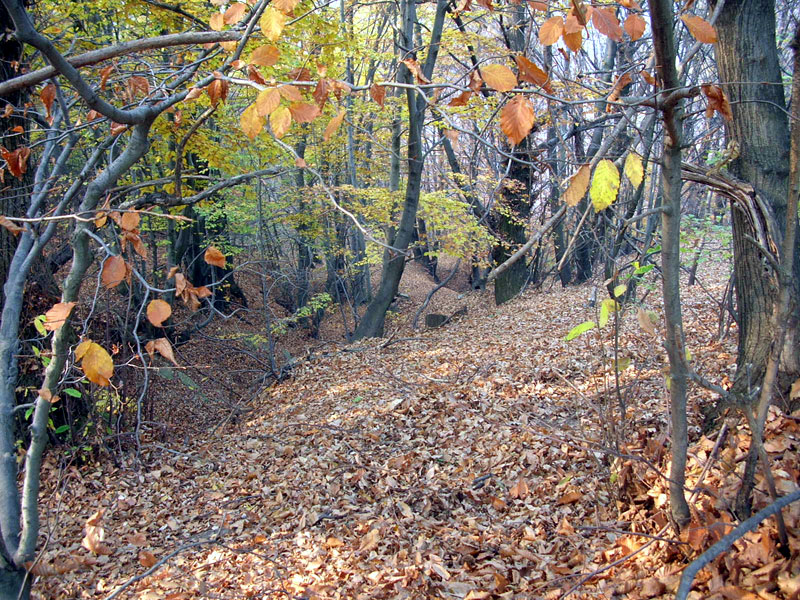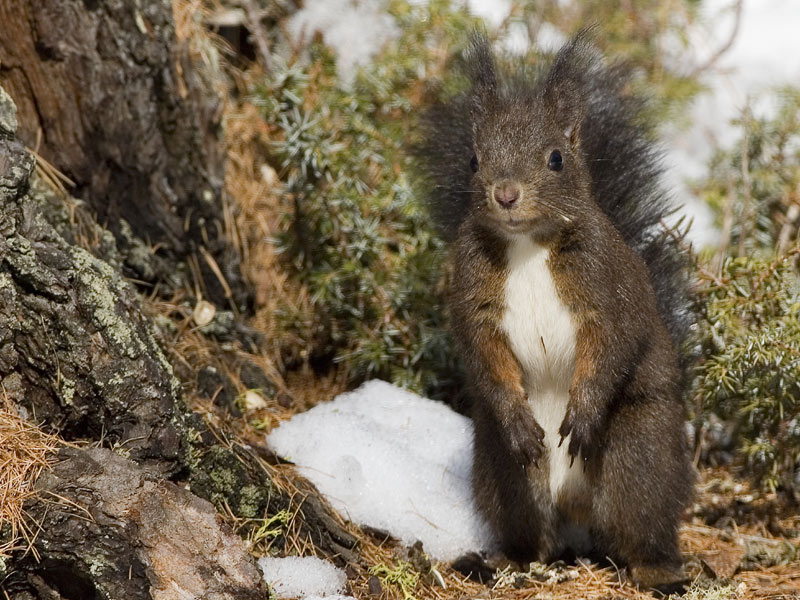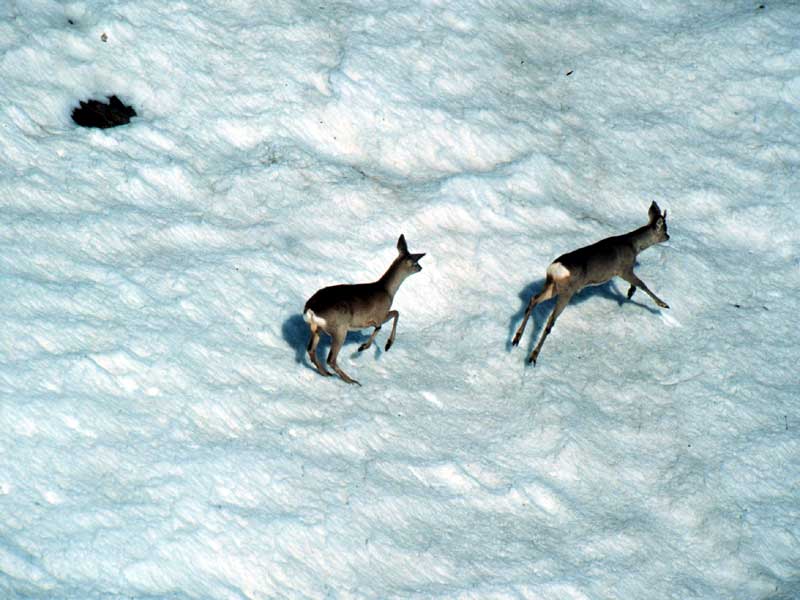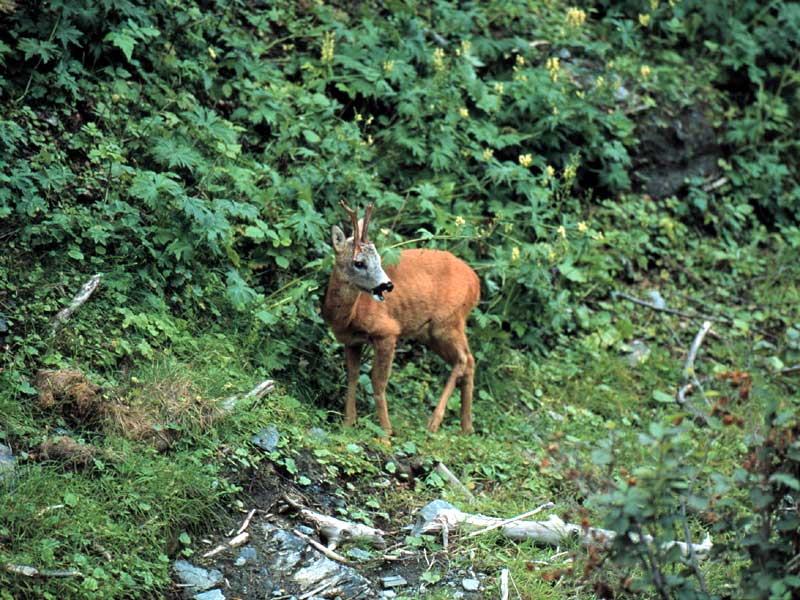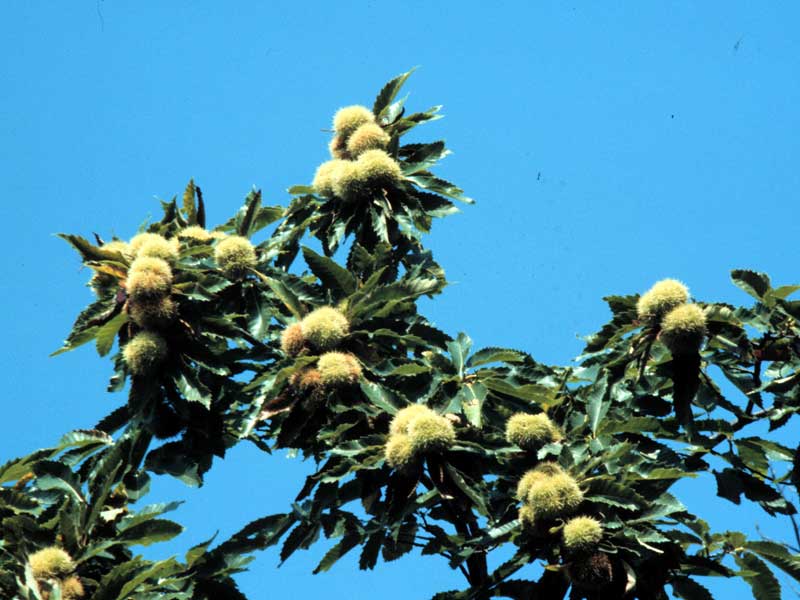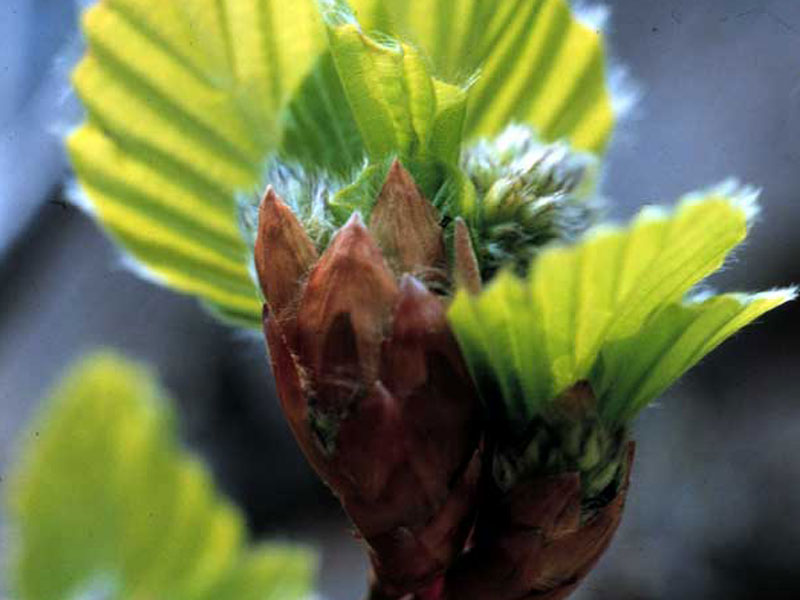Protected Area
Identity Card
- Land Surface Area: 822.00 ha
- Lower altitude (m): 563
- Higher altitude (m): 1'445
- Regions: Piemonte
- Provinces: Torino
- Municipalities: Cumiana
- Establishment Measures: LR 19 29/06/2009
- PA Official List: EUAP0887
- Park Authority: Città Metropolitana di Torino
Monte Tre Denti - Freidour Nature Park of Provincial Interest
The Park territory covers about 820 ha in the Municipality of Cumiana
and develops between the 500 and 1,450m of altitude. It is
characterized by strong natural features, although human presence is
evident, but not intrusive. The vegetational features are significant,
since, besides the arboreal species characterizing the transition
environment between the hills and the mountains, there are also some
Mediterranean specimens. Among the flowers, there are the Orange Lily,
the Martagon Lily, and the endemic Campanula elatines. The
wildlife, including mountain and plain species, is very rich and
includes roe deer, black grouse, squirrel, badger, and salamander.
A thick network of trails offers several opportunities to carry out
walks and hikes and to practice sports, also by mountain bike, while
the walls of Rocca Sbarua are a famous practice wall for climbing.
Flora and Vegetation
When you get to Cumiana basin, you will be welcomed by a setting which is always different, with shades of colors, perfumes, and lights which tend to continuously evolve.
During the spring, the undergrowth is at its best with the
colors of the primroses, lungworts, periwinkles, and with the white and
pink carpets of anemones and dogtooth violets. With the melting of
snow, on the slopes of Mt. Freidour the white and violet crocuses
emerge together with gentians, gentianellas, and several species of
orchids. In May you will get surrounded by the heady perfume of the
Black Locust trees (Robinia pseudoacacia), followed by the
chestnut trees while in the undergrowth you will find the delicate
lilies of the valley. In June, the intense perfume of the lime tree
dominates and the tiny white-yellow flowers of Melampyrum pratense appear.
During the summer, both fruits cultivated by man (peaches, apples,
grapes) and berries (bilberries, blackberries, and raspberries) ripen.
In
autumn, the visitors can admire the myriad of colors of the slopes,
often in contrast with the blue sky. In this season, the woodland is
busy with persons looking for mushrooms (above all the delicious
Boletes and Caesar's Mushrooms) and chestnuts.
Also in winter the
area is charming, with the rocks at the edges of the brooks covered
with the first ice and the snow enhancing the color contrast with the
small red berries scattered in the undergrowth.
Considering
the altitude, exposure, and kind of soil, the arboreal vegetation
consists of chestnut tree, beech, black locust, ash tree, hornbeam,
sessile oak, and common oak, but we can also find specimens of Scots
pine, lime tree, maple, mountain ash, golden chain tree, birch, cherry
tree, and poplar. Near Casa del Parco, situated in location
Pradera dei Picchi, a large area has been subject to reforestation in
the 1920s-30s with Austrian black pines, maritime pines, and larches.
Near San Valeriano there is a very rare specimen of Quercus crenata,
while in a particularly hot and exposed area (location Roc, above
Villanova), there are ilex trees and shrubs, another Mediterranean
essence.
Some protected species are present as herbaceous plants:
although very rare and growing in not very accessible places, we can
find the Orange Lily (Lilium bulbiferum), the Martagon Lily (Lilium martagon), Anthericum liliago and Daphne mezereum. An endemic species is Campanula elatines, growing among the sunny rocks of Rocca Due Denti.
Fauna
In the woodlands, sudden meetings with big animals like roe deer and chamois always represent exciting and almost magic moments, especially if for a few seconds you can meet a surprised look. This area is characterized by a significant presence of wildlife, also thanks to the repopulation measures carried out in the past for hunting purposes.
In the territory of Cumiana you can observe:
- Salamander (Salamandra salamandra): amphibian with tail (urodele), black with showy yellow spots, 15-20 centimeters long. It is usually active during the night and when it rains. Its favorite environment is the wet undergrowth, especially near the watercourses. Over the centuries, popular myths and legends have developed on this amphibian: according to some of them, the salamander would be able to survive to fire.
- Black Grouse (Tetrao tetrix): bird belonging to the grouse family. Males and females are very different one from the other: the cock has black plumage, while the female is brown with white and black stripes. Moreover, the male has on its head two red swellings, particularly evident during the mating period. Black grouses feed on buds and berries, and sometimes insects. They live in mountain areas above 1,000 meters of altitude, in particular in conifer forests and moorlands.
- Roe Deer (Capreolus capreolus): it is a small-size cervid with a tawny coat in summer and grey-brown coat in winter, with white throat, belly, and perianal area. It lives in the plain, in the hills and in the mountains, above all in clearings and shrubby areas, as well as in mountain forests: during the summer it is possible to sight it also beyond the vegetation limit.
- Squirrel (Sciurus vulgaris): belonging to the order of rodents, it has a very long tail, useful both to jump from one tree to another and to run along the branches, ensuring its balance. It feeds on fruit, acorns, seeds, buds, and small branches of firs, larches, and pines. It eats a lot of hazelnuts and walnuts, as well as eggs and sometimes insects. It lives in dry and shady forests made of high-trunk trees.
- Badger (Meles meles): mammal belonging to the Mustelidae family. It has a strong body, with a pointed snout and a white stripe going towards the belly. It has night habits. It is omnivorous: it eats soft roots, tubers, warms, and snails. It digs deep dens in the soil of the undergrowth and shares them sometimes with the fox. It hibernates in winter, but it can also wake up in search of food.
- Fox (Vulpes vulpes): carnivorous mammal belonging to the Canidae family. It has a reddish fur with shades going from yellow to brown, while the throat, the belly, and the tip of the tail are white. It prefers eating rabbits and rodents, but it also likes birds; sometimes it eats insects, earthworms, fruit, berries, carrions, and even fish. It hunts at night or at dawn.
Geology
The mountains forming with their slopes Chisola basin mainly consist of
rather homogeneous rocks, like gneiss formed by potassic felspar,
quartz, and plagioclase, with lower quantities of mica and epidote.
They belong to the structural unit of the Dora-Maira Massif, formed by
various kinds of metamorphic rocks, both intrusive and effusive. This
complex of rocks formed millions of years before the Alps uprising and
was interested by the orogenesis of the alpine chain, during which it
suffered more or less intense changes (metamorphism) leading to the
origin of its present features.
The most widespread lithological
structures of Dora-Maira Massif are, besides gneiss, mica schists
associating with quartz, marble, and amphibolites (or metabasites).
- Fine Gneiss: fine-grained polymetamorphic rocks,
with marked schist features. They consist of variable quantities of
quartz, felspar (albite), white mica (muscovite), brown mica (biotite)
and chlorite; sometimes the garnet where crystals can reach almost one
centimeter size is abundant. Fine gneiss is always associated with mica
schists to which they fade with gradual passages.
- Mica schists: rocks
with evident schist features, with a silver to dark grey color. Their
mineralogical composition is similar to the one characterizing fine
gneiss, with scarcity of felspar and abundance in foliated minerals
(mica and chlorite) and is characterized by the local appearance of
chloritoid. They are polymetamorphic rocks: they derive from ancient
sedimentary rocks and represent the most ancient stratum of Dora-Maira.
- Marbles: they
frequently alternate with mica schists and fine gneiss; they can be
found in lenticular bodies; they have a dark grey color on the altered
surfaces and light grey on the recently broken surfaces. They mainly
consist of calcite, with a variable quantity of dolomite and of folia
of white mica and amphibole small prisms (tremolite). The marbles
derive from the metamorphism of limestones deriving from the chemical
deposit or from the deposit of mineralized remains of organisms.
- Amphibolites: non-foliated
metamorphic rocks, with a dark green color and a very thin grain,
forming structures with a characteristic lenticular or ovoid shape.
They can be found between mica schists and fine gneiss, but they can
also associate to graphite gneiss and mica schists. Their mineralogical
composition is given by amphiboles (attinoto and rare glaucophane),
albite, epidote, chlorite, titanite and sometimes clear mica and
biotite.
- Gneiss and Metagranites: they
consist of big potassic felspar crystals, the characteristic "clear
eyes" after which the rock is named augen gneiss. These rocks can also
present several folia forming a texture with millimetric stripes,
alternating clear and dark colors (foliated gneiss), like Luserna
Stone, intensely extracted because it is easy to divide into slabs.
- Quartzites: extremely compact and granular rocks mainly formed by quartz. They can also present micaceous minerals (mainly white mica) scattered in subparallel beds, giving the rock a marked schistose feature and the possibility to divide it into very thin slabs.


